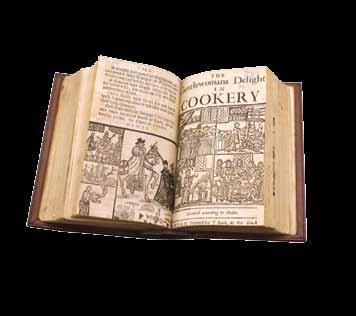
6 minute read
Clandestine Printing: England’s Secret Enlightenment
By Dr Joseph Hone (2016)
Until 1695 all English books, newspapers, and pamphlets needed to be approved by a government regulator before they could be printed. Approval was not easily granted and the authors of unlicensed books were regularly and harshly punished.
Advertisement
In 1695, though, the parliamentary act that facilitated this state censorship of the press was allowed to lapse. The end of the Licensing Act has been judged a ‘good thing’ by both historians and modern journalists, heralding an era of open mindedness, tolerance, and political, theological, and scientific enlightenment. There is a simple problem with that narrative of press freedom, though. It is a fiction.
My research concerns the persistence of the underground book trade into the eighteenth century. Although books no longer required approval before printing, the authors of controversial texts could still be prosecuted under draconian treason and seditious libel laws, which remained powerful tools for controlling what was printed and read. Underground publication aimed to circumvent those laws. By investigating the various techniques that authors, printers, publishers, and booksellers used to evade prosecution, my research aims to clarify the key role of clandestine printing in disseminating the controversial ideas that enabled a subversive and occasionally revolutionary literary culture during the eighteenth century.
Of the techniques familiar to members of the underground book trade, none was more important than disguise. Let me offer an example. In the summer of 1705 the printer David Edwards was visited by a mysterious woman with ‘Copy to be printed’ on behalf of her husband. Among the cognoscenti, Edwards was known for handling scandalous texts. He rarely put his name on the books he printed (as convention demanded) and had an uncanny ability to escape serious punishment, despite having been arrested ‘on suspicion of Treasonable Practices’ on at least eight separate occasions. Yet this woman was even more careful than Edwards. She wore a ‘Vizard mask’ upon their meeting and never allowed the printer to see her face. Her caution paid off. When government thugs interrogated Edwards a few weeks after this initial meeting, the printer was unable to confirm his client’s identity. She never visited his shop again and the pair communicated only through intermediaries. When Edwards finished printing the books, they were carried to a dead drop at a local pub where they were picked up by an unknown courier.
To counter subversion among printers, the authorities recruited and cultivated an extensive network of spies and informants within the trade. Whistle-blowing was an entrenched part of the government surveillance programme. Reasons for turning informant were legion. Some informants simply worked for a fee. Other printers and authors were coerced into shopping their colleagues. Consider, for instance, Richard Savage. This poet and future mentor of the great lexicographer Samuel Johnson escaped the charge of ‘having a treasonable Pamphlet in his possession’ only by ratting on his former printer. Disaffected and destitute printers such as Robert Clare often made excellent spies. Having been forced out of his business by hostile colleagues, Clare found employment providing the government with the names of authors, printers, and publishers of scandalous tracts. In the cutthroat world of the eighteenth century book trade, these spies and informants posed very real threats to the security of satirists and controversialists. Edwards himself soon turned snitch. Government account books reveal that after the incident with the masked woman he was paid regularly from slush funds reserved exclusively for intelligence work.
What hopes can we have of identifying the authors and printers responsible for illegal books where this sophisticated government surveillance failed? Neither Edwards nor any of his contemporaries discovered the identity of the woman in the ‘Vizard mask’. Yet we now have access to information and analytical techniques that were simply unavailable during the eighteenth century. Combining established bibliographical methods (inspecting decorative ornaments, broken type, and paper quality) with methods of historical research (tracing payments and examining business ledgers and correspondence) can reveal the printers of controversial books in cases where government agents of the day could not. Identifying authorship is frequently more complicated. However, trawling archives for associated manuscripts can sometimes yield positive results. And if that doesn’t work, there is always stylometrics, whereby we compare the literary style of an unattributed text alongside texts by the primary candidates for authorship.
The aim of my work is not merely to establish the historical significance of this grubby underbelly of eighteenth century literary culture, but also to cast new light on some more familiar texts. Our interpretation of a book such as Jonathan Swift’s Gulliver’s Travels (1726), for example, surely changes when we discover that the anonymous manuscript was thrown through a publisher’s door from a moving carriage in the middle of the night. Swift had employed a junior scribe to copy out the manuscript, ensuring that Swift’s own handwriting could not be recognised and used as evidence of his authorship of this controversial book. The print job was split between four workshops, to ensure that no printer could be caught with the complete text. Though now famous, Gulliver’s Travels and several other canonical works of literature originally belonged to this shadowy world of clandestine printing and consequently demand to be read in that milieu.
And there are surely contemporary lessons to be learned from this research, too. Freedom of the press continues to be a hot topic in Britain, not least after the perceived failures of the Leveson Inquiry; the recent attempt to establish a royal charter for press regulators; and now the government plan to implement ‘Section 40’ of the Crime and Courts Act 2013, and thereby force newspapers to pay the legal costs of their opponents in a libel suit, even if the newspapers win their cases. The lapse of the Licensing Act in 1695 has become reinterpreted as a milestone in the history of journalism. In the words of one left-wing magazine, ‘For the first time since 1695, Britain now has an official state-backed regulator, called Impress’. Of course, as my work shows, what actually happened in 1695 is that press regulation simply shifted to become the responsibility of the courts. The ‘300-year tradition of press freedom’ cited in a recent editorial leader in The Spectator is little more than an historical illusion. And if that tradition is an illusion, as I want to suggest, then we must continue to question the reality of those freedoms today.
Dr Joseph Hone
Dr Joseph Honeis the Lumley Research Fellow in English at Magdalene. Before coming to Cambridge, Joseph held first a graduate scholarship and then a lectureship at Jesus College, Oxford, where he also completed his doctorate. In 2014 he was awarded the Katharine F. Pantzer Jr. Fellowship in Descriptive Bibliography at Harvard University and, in 2018, will take up the James M. Osborn fellowship at Yale. In his research, Joseph is interested in combining literary, historical, and bibliographical modes of analysis. His first book Literature and Party Politics at the Accession of Queen Anne is forthcoming from Oxford University Press. He is one of the editors of The Oxford Edition of the Writings of Alexander Pope.
www.magd.cam.ac.uk










